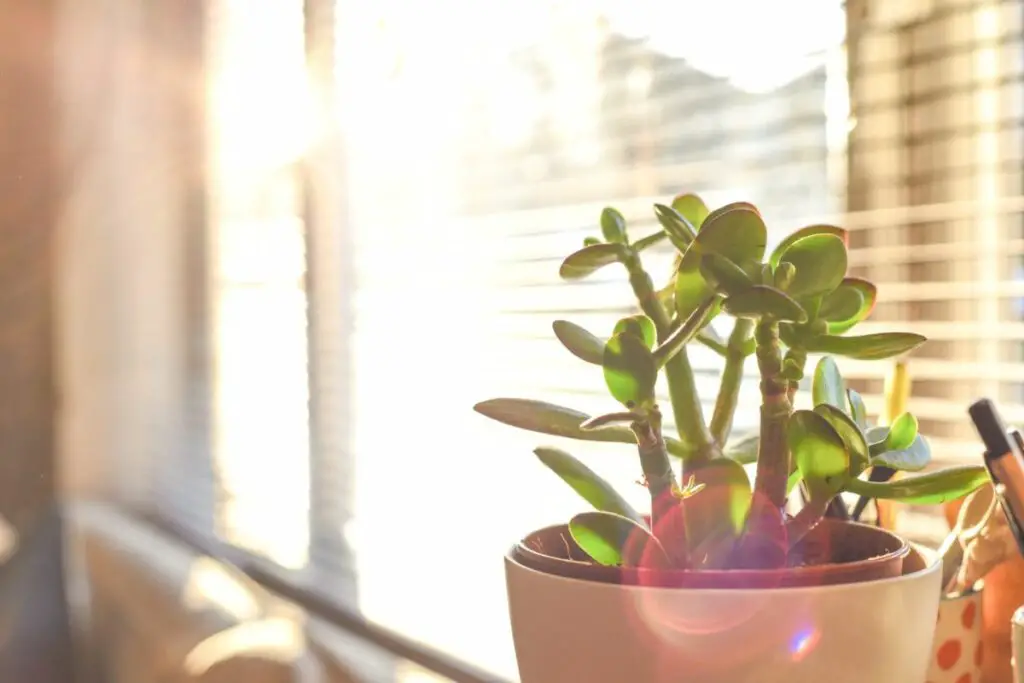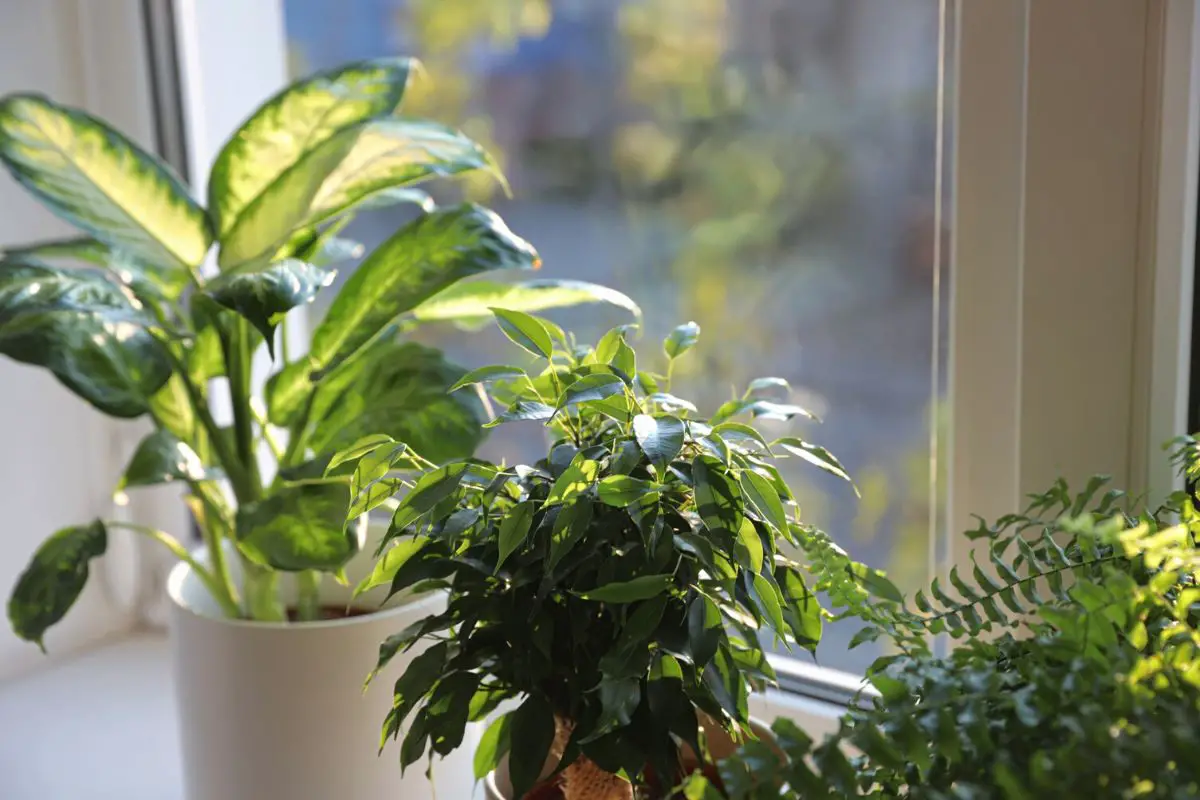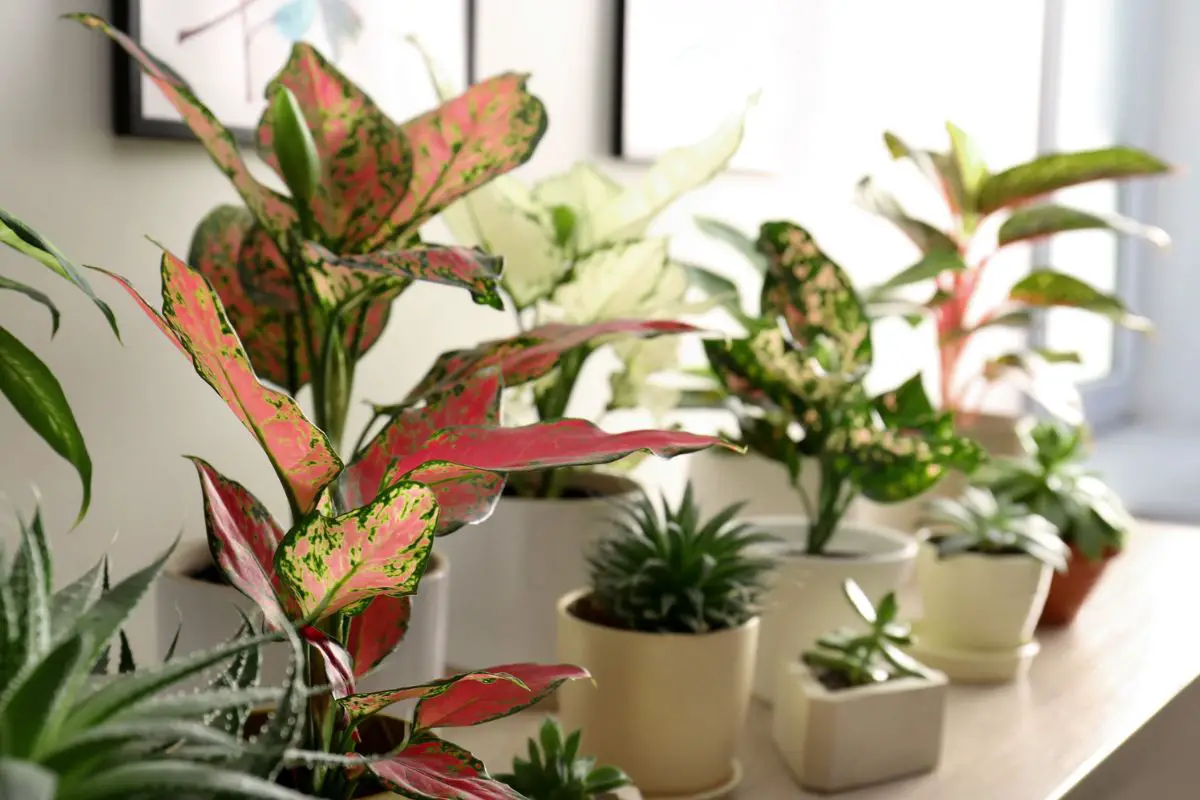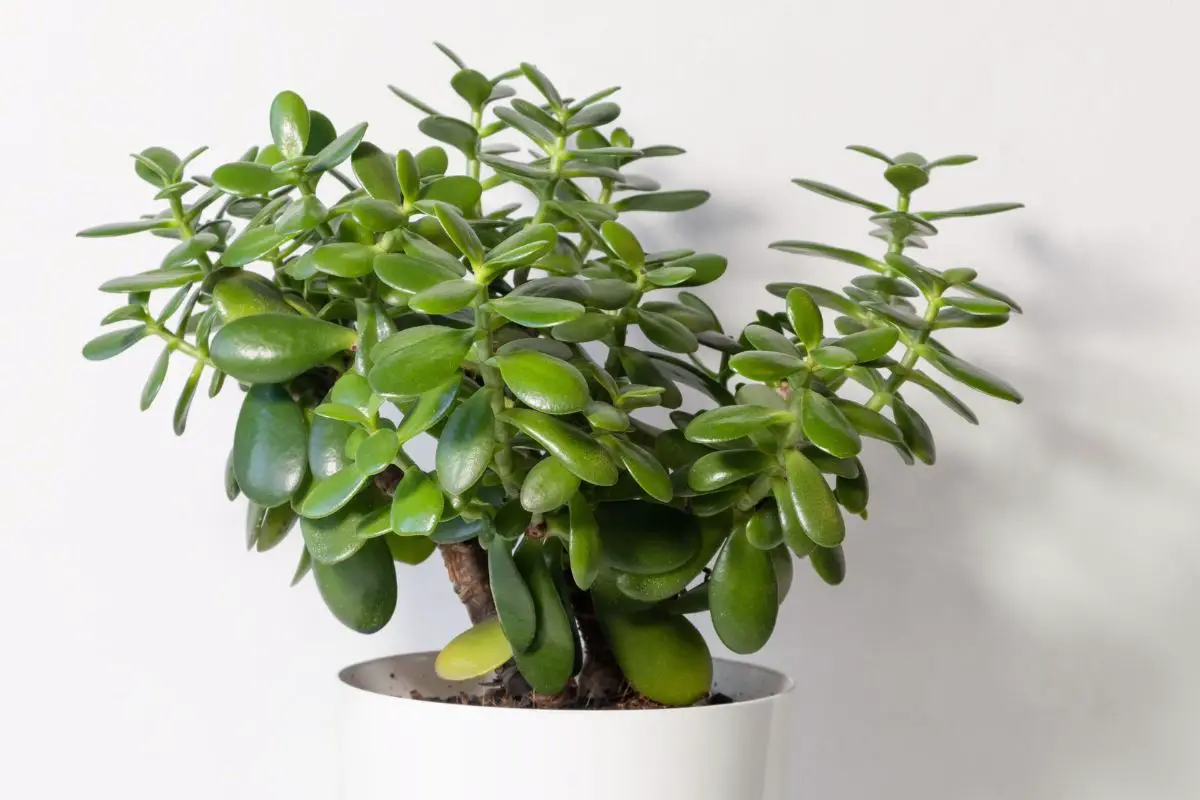While the vibrant and charming jade plant can survive in the most unfavorable conditions, it will flourish in areas of your home with enough sunlight and care provided.
The best locations for a jade plant in your house are:
- South-facing locations
- East-facing locations
- Southeast-facing locations
- Entryways
- Any location under grow lights
Whether you believe the jade plant is symbolic depending on the location, or you just want your plant to thrive in the best area of your home, read further. This article will explore the best locations in your home for your jade plant to flourish and bring positive energy into your life.

Jade Plant Environment Requirements
Jade plants (Crassula ovata), originated from southern Africa. They’re a popular houseplant in the US because of their low-maintenance nature. They can easily live decades—some even reaching a hundred years—under the right conditions.
That said, there are a few things to keep in mind to ensure your jade plants live to their fullest in your home environment.
- Light: In their native environment, they thrive with at least 4 hours of direct sunlight daily.
- Humidity and Water: As succulents, their plump leaves are well-adapted to moderate to dry conditions. They enjoy 30-50% humidity, which is the same optimal level for comfort for humans indoors.
- Temperature: Jade plants prefer warm temperatures and will likely suffer frost injury when left outdoors in the winter. Keeping indoor temperatures between 65 and 75 °F (18-24 °C) should be enough to keep them healthy. Bring outdoor jade plants into your home when nighttime temperatures are expected to drop below 50 °F (10 °C).
Keep these things in mind when choosing the best locations for your jade plants.
5 Best Spots for Jade Plants Indoors
Although jade plants love direct sun, they can still thrive inside your home if you have plenty of bright spaces in your home.
Here are some of the best spots to choose from:
1. South-Facing Locations
Placing your jade plant near south-facing windows is an excellent choice because it provides optimal light exposure for strong growth.
Indoors, jade plants thrive in a full day of bright indirect light and can even handle a few hours of direct sun in the summer when properly acclimated. A spot in front of a south-facing window will deliver plenty of light when the plant needs it, promoting strong and healthy growth.
Although jade plants love receiving as much sun as possible, they don’t want to be placed in the spotlight if they’ve spent a considerable time indoors. If your jade plant is exposed to direct sunlight for too long, you’ll notice the leaves will begin to show signs of sunburn.
Simply moving the pot out of the path of the direct sun in the afternoon when the sun is at its most intense will prevent any serious damage. Alternatively, you can hang light curtains against your southern windows, which you can open in the morning and close during midday.
Your jade will do great nestled in a corner where it still receives bright light most of the day but is protected. Don’t forget to rotate your plant about 90-180° weekly to expose all areas of your jade to sunlight. Rotating is part of the essential care that keeps your plant healthy and prevents stress and awkward growth.
2. East-Facing Locations
When the sun rises to greet the world, it will shine its rays from the east. Placing your jade plant in a brightly lit area near an east-facing window will allow your plant to absorb the gentle morning sunlight. Jade plants enjoy brightly lit areas and utilize the sun’s energy to produce strong and healthy growth.

The more hours of solar energy your jade can absorb, the more growth it will produce.
As mentioned above, you must pay attention to the sun’s path. If the sun is too bright and the outdoor temperatures are too high in the summer, you can move your plant about 5 feet (1.5 m) away from the window to prevent rapid water loss or sunburn.
In the winter, you can place the plant next to the window, but ensure it’s shut to prevent cold drafts.
3. Southeast-Facing Locations
Placing a jade plant in the southeastern direction in your home is also commonly suggested.
This location will provide plenty of sunlight for your jade plant when you place it close to the window. This area of your home should get the morning and midday sunlight for your jade plant to absorb.
As the seasons change into the cooler months, position your jade plant in a location that allows it to receive bright sunlight as the sun moves.

4. Entryways
Feng Shui is a spiritual practice of placing objects in specific places of your living space to create positive energy and balance in your surrounding environment.
Perfecting the positioning of objects surrounding your living space is believed to provide a harmonic experience with positive “chi” energy. On the other hand, cluttered spaces and misplaced objects can create the negative energy of chaos and stress.
Feng Shui: Plant Placement and What It Means
Jade plants are charming for houseplant lovers, but they also have a symbolic meaning in Chinese culture. The jade plant is often called the “lucky plant” or “money tree.” This is fitting because these attractive plants symbolize good luck, wealth, and success, according to ancient Chinese belief.
Placing your jade plant in certain areas of your home creates a positive flow of energy that may bring good luck and prosperity your way.
The following are the locations in your home that are highly suggested for placing your jade plant when practicing Feng Shui:
- A southeastern area that is next to the main entrance
- Next to the door of your in-home office
- In the dining room
- In a western location of your home
Wrong Placements
When you place your jade plant in the wrong location of your home, its negative energy will come your way.
For example, placing your plant in the bathroom is said to send all that positive chi energy down the drain. The space is also more humid, and receives far less light than the rest of the house, so that’s an additional reason why you shouldn’t put your jade plants here. They enjoy lower-humidity areas and plenty of bright and indirect sunlight.
Since jade plants are aligned with higher energy, avoid placing them in your bedroom because the bedroom is a place that should be calming, inviting, and relaxing.
Invite Positivity to Flow Through Your Front Door
Next to the main entrance of your home is said to be the best place to put your jade plant, according to Feng Shui. The belief is that you’re inviting positive energy and opportunities into your life when placing your jade plant in a southeast direction close to the main entrance. This goes for your home, office, and business entrance.
However, on a practical level, drafts from the doorway can significantly affect your jade plant’s health during cooler months. Jade plants are sensitive to cold and drafty air, so placing them directly against windows and next to doors may not be ideal for their health.
When cooler weather comes, consider relocating your jade plant away from drafts of cold air to reduce the risk of harming it.
Feng Shui Your In-Home Office With a Jade Plant
If you have an in-home office, placing a jade plant next to the door of your office is another excellent way to invite fortune and prosperity.

To support the Feng Shui claim, studies have shown that plants in your office will create positive energy, a more soothing environment to work in, and boost brain function and creativity.
For years, studies have been conducted to understand the psychological effects of plants in living and working quarters. Studies confirm that plants stimulate brain functions like creativity and motivation and reduce stress.
Wine, Dine, and Enjoy Your Jade’s Positive Vibes
The dining room is another excellent location to put your jade plant. This is also said to be beneficial for welcoming positive chi energy into your space. If your dining area lacks natural window light, you can use a small grow light (more on that below) to enjoy the benefits of your lovely jade plant and the positive chi energy it provides.
5. Any Location Under Grow Lights
If the inside of your home doesn’t receive enough sunlight, there are still options to create an ideal habitat for your jade plant using grow lights.

With grow lights, you can pretty much enjoy your jade plant in any room of your home. To benefit growing plants indoors, artificial lighting technology has come a long way. Grow lights are designed to provide plants with energy they can absorb to create chemical energy (foods) to move throughout the plant when and where it’s needed.
Without enough light energy, the growth rate will slow or stop, and your jade plant will reserve energy to survive the low-lit conditions. Alternatively, your plant will become leggy and unattractive while trying to look for a light source.
Grow lights are a surefire way to provide enough sunlight throughout the day, even when the number of sunlight hours has lessened substantially during the winter months.
Supplementing with grow lights provides all the solar energy your plant needs to complete the essential cycles for remaining healthy and producing new growth.
How Grow Lights Work
The best grow light for succulents is a full spectrum LED grow light. And since your jade is part of the succulent family, a full spectrum LED light will be the best choice. You need full-spectrum lighting because it provides enough blue, red, and green lights that are beneficial to the growth and health of your jade plant.
Look for grow lights that can emit 500-1000 foot candles (10.8 lux) and place them 12-18 inches (30-45 cm) above your jade plant. The higher the light intensity, the farther the grow lights should be. Keep the lights on for about 10-14 hours a day.
Final Thoughts
There are many ideal places for jade plants in your home that improve overall design while providing the best environment for the plants. Add the Feng Shui benefits and jade is bound to become your favorite indoor plant.







